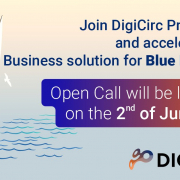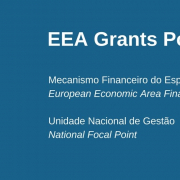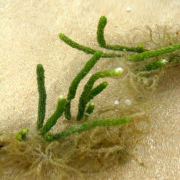Demonstration of sustainable wave energy farms | Deadline: 16 January 2024
Deadline: 16 January 2024
Budget: €38.000.000
Countries: Algeria, France, Italy, Malta, Mauritania, Morocco, Portugal, Spain, Tunisia
More information: funding and tender opportunities portal by the European Commission
Scope
Demonstration of sustainable wave energy pilot farms (minimum 2.0 MW installed capacity and at least 4 devices) in full operational conditions for long periods of time is essential to advance this sector. It is the way to bridge the gap from technology development to market development while reducing costs, reducing risks and attracting investors for future commercial projects. The farms should be composed of several devices of the same type.
The wave energy farms have to be connected to the electricity grid. To focus on the technologies with the greatest chances of success, the single wave energy device to be used in the array deployment is expected to be satisfactorily demonstrated at full scale before, with limited changes to incorporate the learnings. Any change on the wave energy device may be incremental but should not involve fundamental changes to the device design or composition. The innovation component should mainly lie on the pilot farm systems and supporting industrial manufacturing activities that enable a cost-effective and high-performance pilot farm. Where established, stage-gate processes can help ensure that this approach is followed.
The project is expected to deploy a wave energy farm with a minimum capacity of 2 MW and operate the farm at least 2 years in the lifetime of the project. After the project it is expected that the farm will continue to be operated for at least 8 years. The project should develop and execute an effective operation and maintenance programme.
Proposals are expected to address also all the following for both the supporting infrastructure for the farm and for the individual devices themselves:
- Industrial design and manufacturing processes including set up of an industrial supply chain, circularity of (critical) raw materials, sustainability, scalability, installation methods, transport, operation & maintenance, supply chains and the related digital infrastructures.
- Projects are requested to demonstrate the technologies at sea while respecting existing environmental regulatory framework. Necessary mitigation measures should be integrated to protect habitats and species. Present an environmental monitoring plan to be implemented during the demonstration action. Environmental monitoring data should be open source and be shared with EMODNET and the IEA OES environmental task.
The project has to include a clear go/no go moment ahead of entering the deployment phase. Before this go/no-go moment, the project has to deliver the detailed engineering plans, a techno-economic assessment, including key performance indicators based on international recognized metrics, a complete implementation plan and all needed permits for the deployment of the project., The project proposal is expected to present a clear and convincing pathway to obtaining necessary permits for the demonstration actions and allow for appropriate timelines to achieve these. The project is expected also to demonstrate how it will get a financial close for the whole action. For this the use of other EU/national/regional support mechanisms can be considered. Independent experts will assess all deliverables and will advise for the go/no-go decision.
The exploitation plans should include preliminary plans for scalability, commercialisation, and deployment (feasibility study, business plan, financial model) indicating the possible funding sources to be potentially used (in particular the Innovation Fund).
Data from the pilot structures should be collected to understand the performance and behaviour of the structure and the surrounding environmental condition to optimise the concept and understand the environmental impact of wave energy harvesting.
The selected projects are expected to contribute to the BRIDGE initiative[1], actively participate to its activities and allocate up to 2% of their budgets to that end. Additional contributions to the ‘Alliance for Internet of Things Innovation’ (AIOTI) and other relevant activities (e.g. clusters of digital projects and coordinating actions) might be considered, when relevant.



